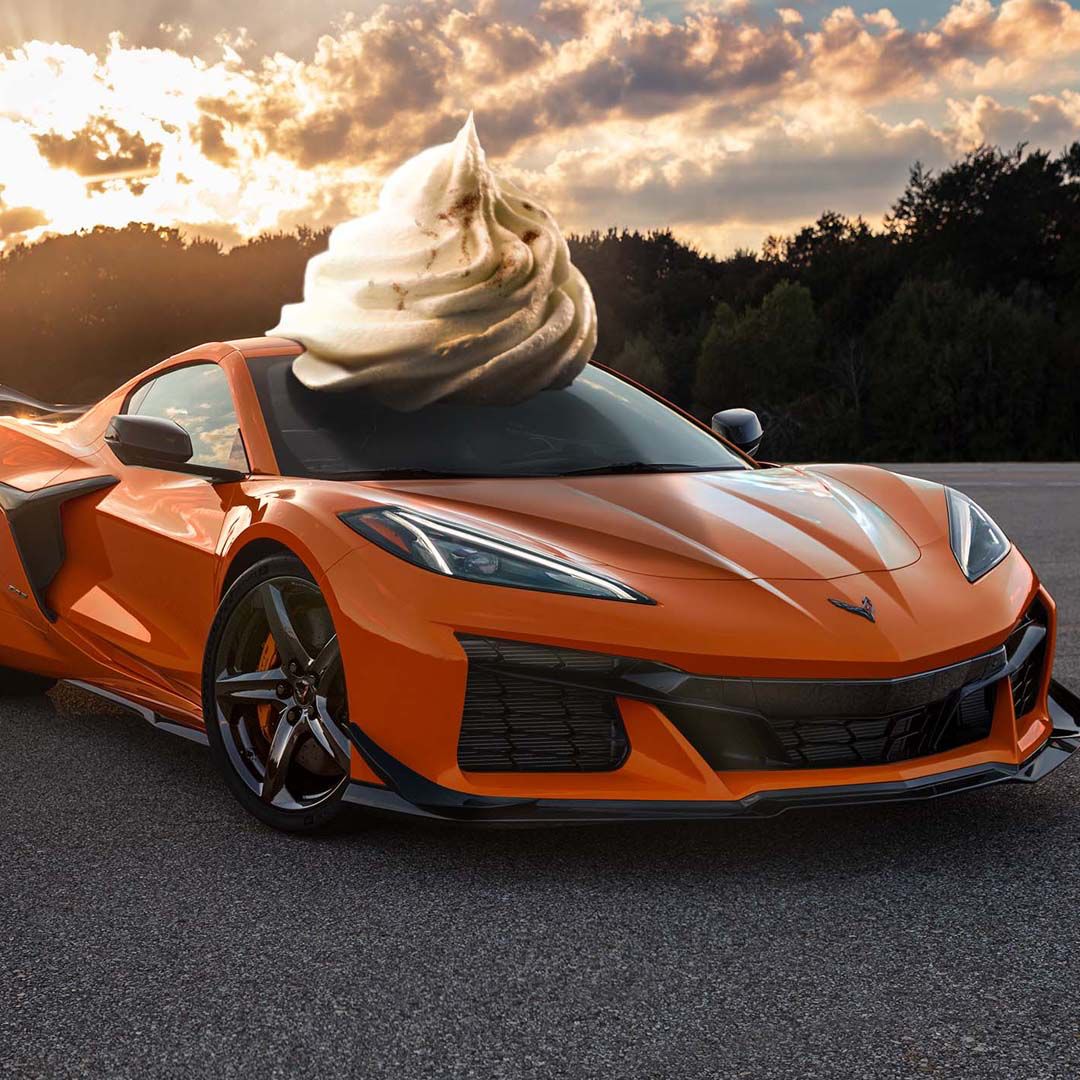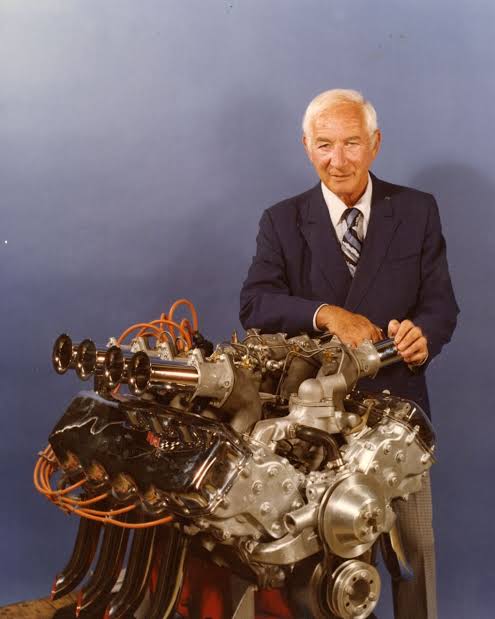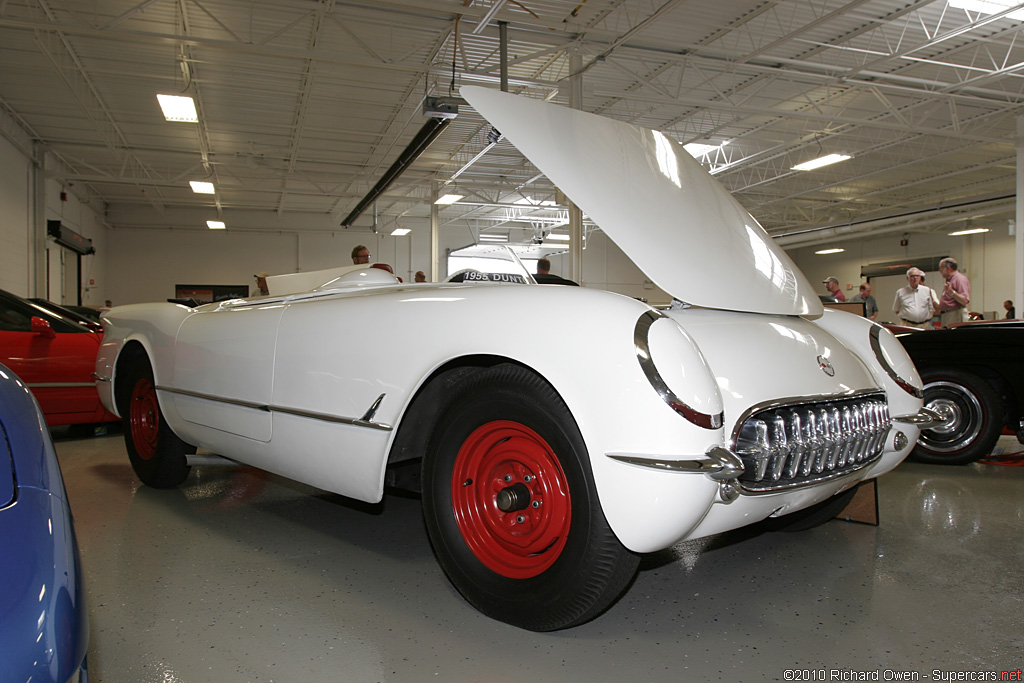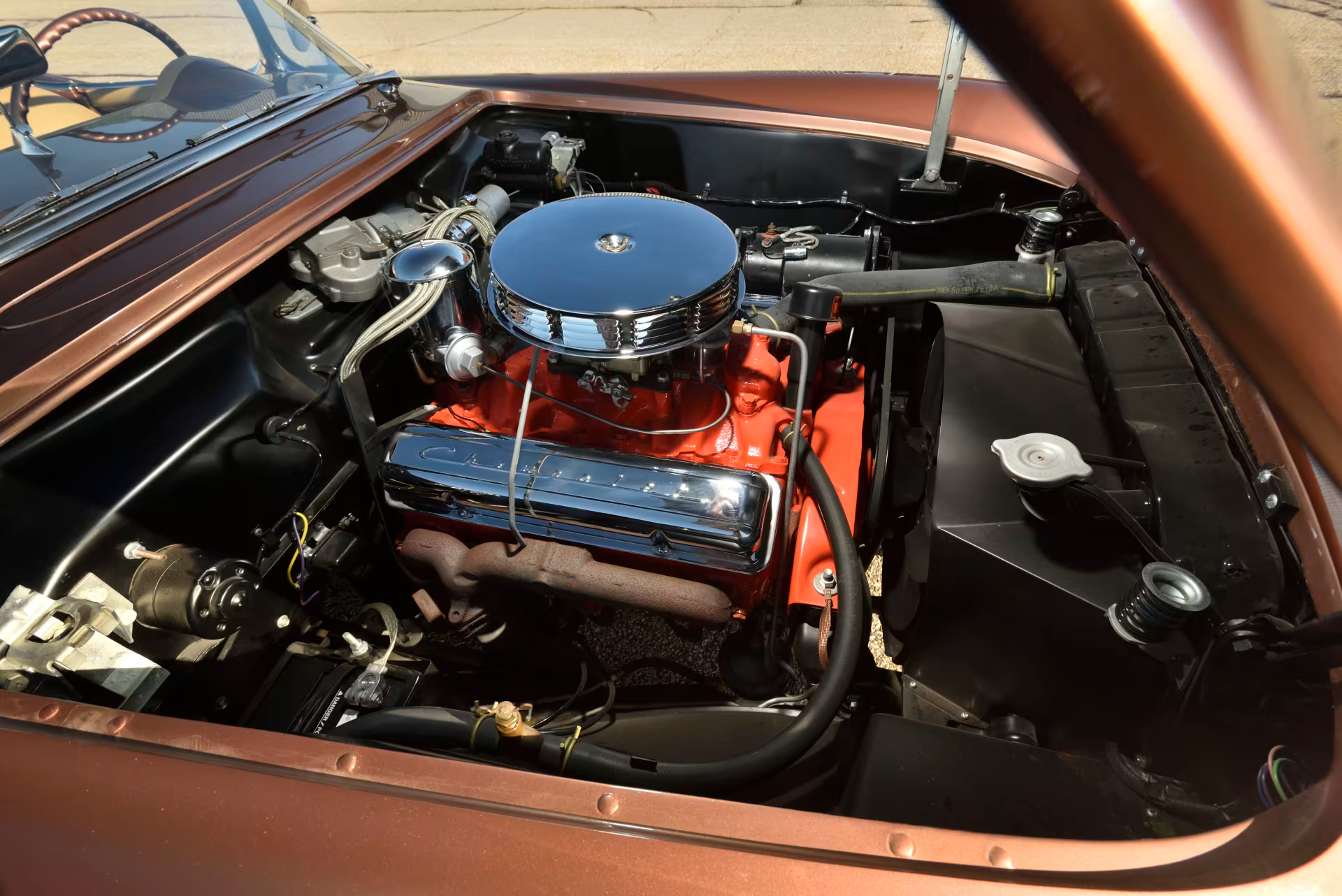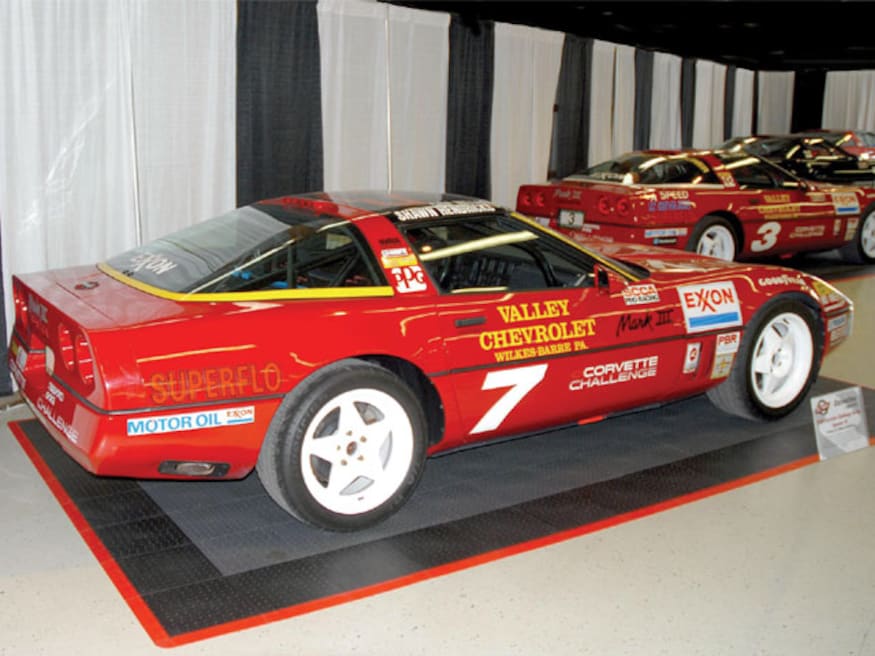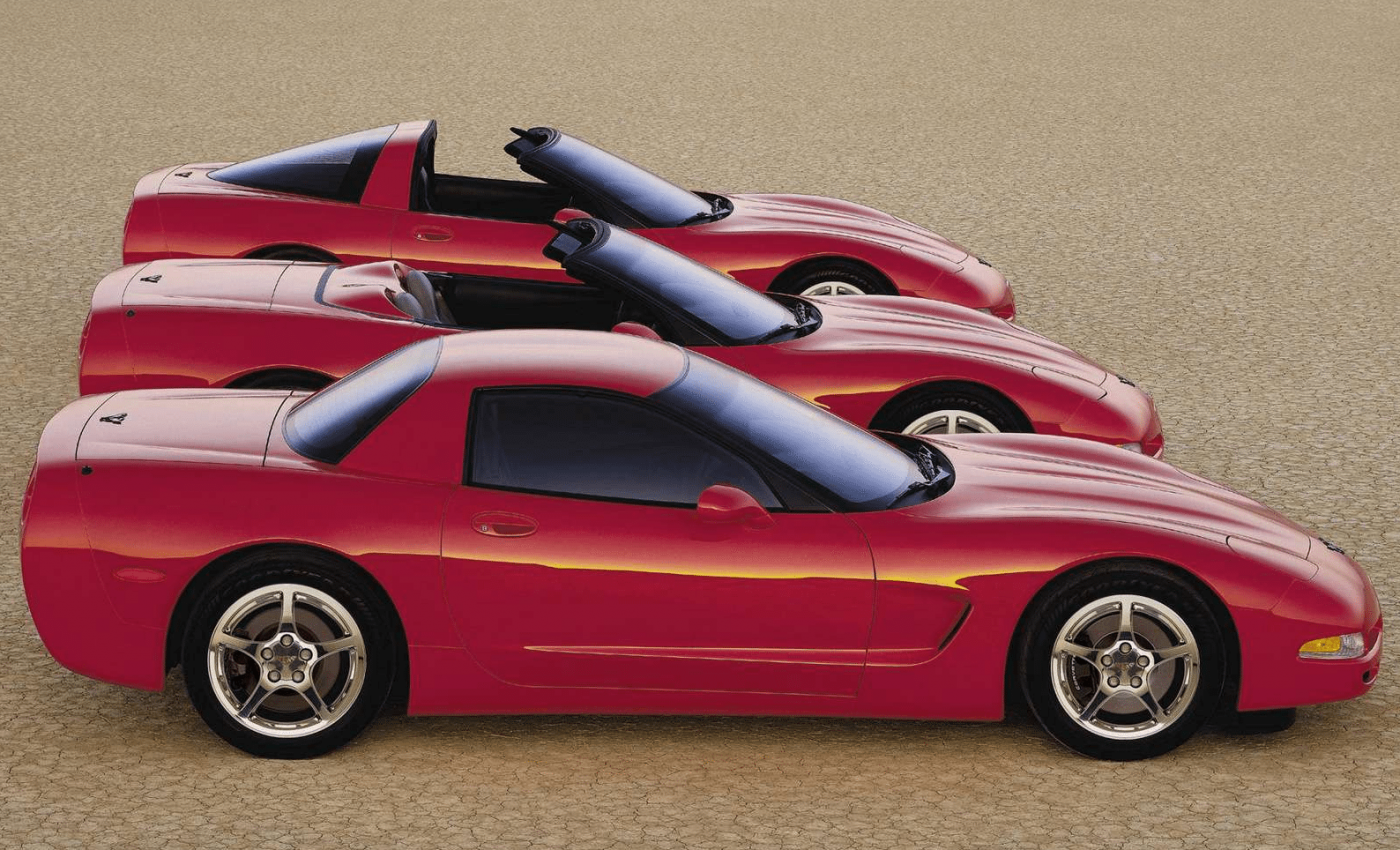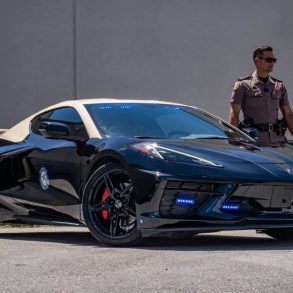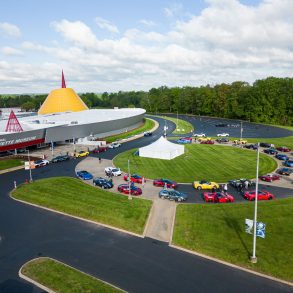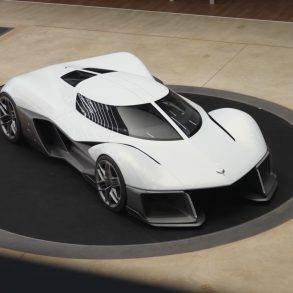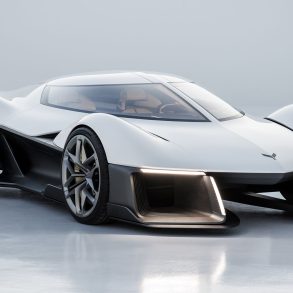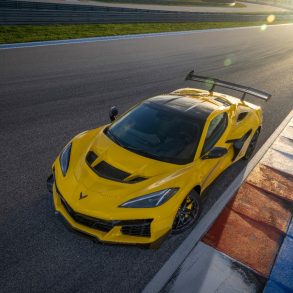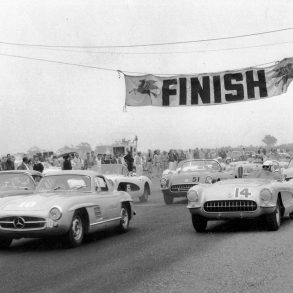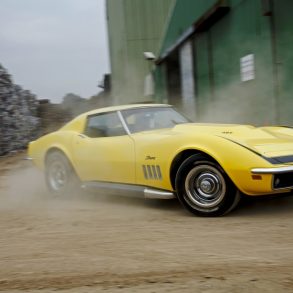We’re at that time of the year when time flies and the holidays blur together, forming a spastic whirlwind of running from one event to the next, with a bunch of chores and honey-do lists mashed into the mix. As we approach Thanksgiving 2024, CorvSport and yours truly would like to take a moment to pause for some reflection and gratitude. And we would like to hear from you, our faithful readers. What are you thankful for? [Author’s Note: This article is FREE and not behind a paywall. If/when any popups occur, please click to make them disappear and continue enjoying the article.]
To begin with, CorvSport is thankful for our faithful readers and members. It goes without saying that without you, we would not exist. It is your passion for our beloved Corvette that fuels our passion and obsession. On a more personal note, I am thankful for CorvSport’s General Manager, Cameron Martel. After my 17-year sentence as an owner/operator of a used car dealership ended in 2022 (I sold the biz!), I was looking to reinvent myself and was reminded of my longtime yearning to be an automotive writer. I found an old post from Cameron on Reddit, and after a few exchanges, I found myself in an actual one-on-one video interview!
Yikes! I had no traditional writing experience, “just” 130,000+ posts and casual content on the Corvette Forum, and the privilege of owning 20 Corvettes since my first in 1999 (at a youthful 31). Yet, despite this, Cameron sensed my passion for Corvettes and brought me on board. As I approach 500 articles, thank you, Cameron, for having confidence in me.
Now, these shout-outs are important, but without our Corvette, they are essentially meaningless. And it’s odd to think that there were a few times in the Corvette’s 71-year history when “America’s Sports Car” nearly died. Surprisingly, the first was just two years after its debut. Let’s begin.
Ground Zero: The Legend Who Ushered In The Corvette’s First V8
No article about the Corvettes that saved us would be complete without mentioning the man behind the greatness, Zora Arkus-Duntov. Over the last 12+ years since CorvSport was founded by Scott Kolecki, we have built a vast catalog and database from some of the best in the business, and it would be a disservice not to tap into it during this poignant Thanksgiving feature.
Profiling Greatness: Zora Arkus-Duntov
(Published by CorvSport’s Josh Boyd)
“Though it is certainly difficult to imagine today, some 65 years ago, the Corvette was well on its way to being discontinued after only two years of production. Upon its release, the Corvette rode an initial wave of popularity that died as quickly as it began. By 1954, critics were relatively unamused with the American sports car’s not so sporty performance. At the heart of the Corvette was the “Blue Flame,” an anemic inline-six powerplant that did well to muster 150 horsepower.
The public’s relative disinterest came as little surprise to then assistant staff engineer, Zora Arkus-Duntov. After all, Duntov had pointed out the Corvette’s less than impressive performance attributes a year earlier, in the very letter to Chevrolet Chief Engineer, Ed Cole, that left a sizable enough impression to warrant his immediate hiring. It should likely have come as no surprise then that Duntov would go on to pen a second memo only two years later, titled “Thoughts Pertaining to Youth, Hot Rodders, and Chevrolet.”
In this memo, Duntov outlined his ideology that the Corvette must exude performance appeal, in order to find favor with consumers of a younger age demographic. Top Chevrolet brass took note, and the Corvette became the benefactor of an optional 195 horsepower 265 cubic-inch, small-block V8. This addition has more often than not, been cited as the Corvette’s saving grace…” Continue Reading or Save For Later
The Next Step to a V8 Corvette
1955 Chevrolet Corvette EX87
“Built for outright top speed, this prototype Corvette was built by Zora Duntov. He successfully piloted the car to a two-way average speed of 150 mph in January of 1956 at Daytona. Later two more similar cars were built for the 1956 Daytona Speed Weeks in February.
Over a year earlier, Chevrolet Chief Engineer and three-time Indy 500 winner Mauri Rose had Daytona legend Smokey Yunick install an experimental V-8 engine into a 1954 Corvette test mule, which was given the factory designation EX87. When its testing duties were completed, it was given to Zora Arkus Duntov at Chevrolet Engineering to prepare for a high-speed record run at Daytona Beach in January 1956. It was assigned a new tracking number, 5951.
Duntov modified the car by replacing the windshield with a curved plexiglass windscreen and fitting a fiberglass tonneau cover over the passenger side of the cockpit. Borrowing from recent Jaguar practice, Duntov also fabricated a fiberglass headrest-tailfin for high speed stability. Duntov increased the engine displacement from 283 to 307ci and ordered a special camshaft from Engineering before loading EX87/5951 onto a trailer and heading for GM’s Arizona Desert Proving Ground.
After initial resistance from Engineering, Duntov’s cam was delivered to the Proving Ground, where it earned lasting notoriety as the “Duntov cam” by helping the car blast off to a record 163 miles per hour, an astounding figure in 1955. That same engine was later installed in another famous Corvette, 6901, which set a new record at Daytona of 150.583 mph…” Continue Reading or Save For Later
The First V8 Corvette
From CorvSport’s Tolu Akinshete’s feature titled:
From Concept To Legend: 10 Milestones In Corvette Evolution
“The first Corvettes were powered by a ‘Blue Flame’ 3.9-litre inline-six that made 150 hp, a relatively modest power output even for that period. The Corvette needed more oomph if it was to compete more favourably with rivals from European manufacturers like Porsche, Jaguar and MG.
Fortunately, Chevrolet realized that, and in 1955, the Corvette received a welcome engine upgrade. A small-block V8 replaced the inline-six as the beating heart of the American sports car. The initial V8 displacement was 265 cubic inches with a 195 hp rating. This power boost dramatically improved the Corvette’s acceleration and overall performance...” Continue Reading or Save For Later
The Fourth-Generation Ushers In The Modern Corvette
I was reminded the other day by a popular Facebook enthusiast, Just Cool Old Cars, just how precarious the transition from the third to fourth-generation Corvettes was. His words were so precise that I want to share his summary in an unedited format.
“You probably already know that there’s only one 1983 Corvette. But, it’s one of 43 built, and the sole survivor. The 1982 model, with its lackluster Cross-Fire Injection engine and tired design, almost spelled doom for the brand.
But, GM had an ace up its sleeve. A complete redesign.
The 1983 Corvette was supposed to be a game-changer, promising state-of-the-art technology and a powerful engine. Production began, but the ambitious new design proved too complex. GM decided to delay, and by January 1983, the first glimpses of the 1984 model were shared with the media. The new Corvette featured an LED dashboard and body panels made from advanced plastics, innovations unheard of in production cars at the time. It’s easy to take for granted today how much of a game-changer the C4 was.
Of the 43 pre-production models built, 42 were destroyed, leaving only one survivor.
This lone 1983 Corvette now resides in the National Corvette Museum, a testament to what could have been. Despite the missing year, the 1984 Corvette emerged victorious, earning the title of “Car of the Year” by Motor Trend Magazine. Thus, the C4 Corvette was born, marking a triumphant return for America’s sports car, and ushering in the “modern” era of performance.”
Read CorvSport’s Feature From Josh Boyd, Titled “1983 Corvette (The One & Only)”
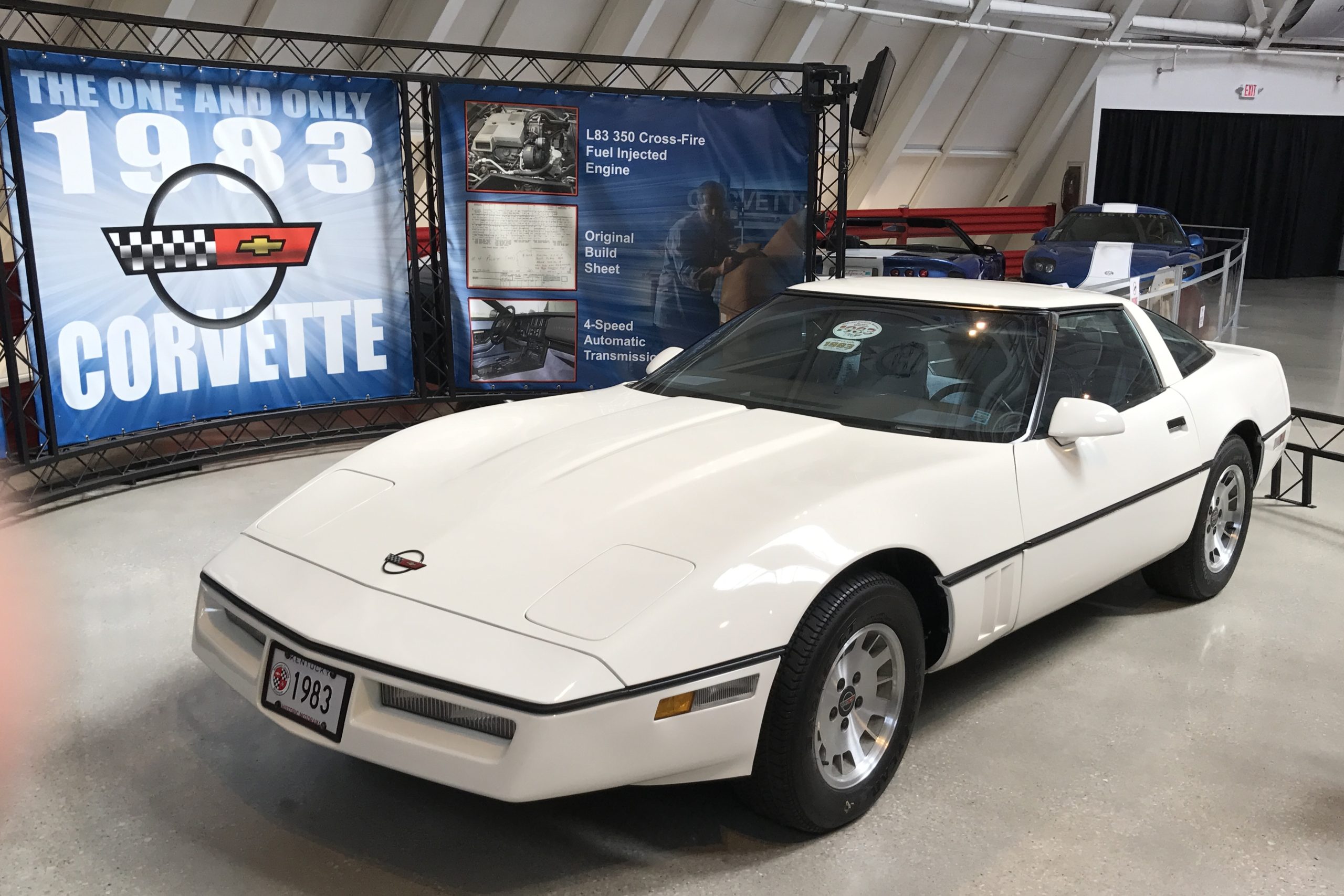
The C4 Legacy Continues
Legacy… wait, what? Yes, I know the fourth-generation Corvette gets a lot of “hate.” Despite aging nicely and having a favorable bang for the buck, the fourth-generation Corvette often still catches grief from some enthusiasts for being the generation that almost brought the Corvette brand down. Maybe it’s because the Corvette’s styling and performance have improved exponentially since the C4’s introduction, but to this day, the C4 still gets more hate than it deserves.
A succinct reminder of how the fourth-generation Corvette changed the sports car game came on the race track. Here’s a fun piece I wrote early in my CorvSport tenure highlighting how much of a game-changer the C4 was.
The Moment the Corvette Got So Good
And an embarrassing moment in racing for Porsche
“It’s been nearly 40 years since the Corvette brand shook the world stage with the all-new 4th generation Corvette. There are many facets to the introduction of the fourth generation in 1984, like the venerable “King of the Hill” ZR-1 coming soon after, missing a production year in 1983 (the only time this happened in Corvette history), and the second-longest production of any generation, just to name a few interesting tidbits about the C4.
But today we are going to focus on what happened to the Corvette in the popular SCCA racing series. The C4 with its supercar handling numbers (0.9-g cornering), reliable Chevy small-block V-8 performance, and excellent brakes, quickly proved it could not only compete in the SCCA Showroom Stock GT series but kick butt.
From 1985 to 1987 the C4 left the Porsche 944 Turbo in its rearview mirror, amassing a 29-0 record. To say the series was shocked would be an understatement, and oddly enough racing might be the only sport where winning is penalized.
Sure Corvette enthusiasts were happy, but this dominance threatened race participation by other brands as well as attendance. So the C4 went from kicking butt to getting kicked out of the series. Key figures inside and outside of GM got together and the Corvette Challenge Series was born. Major sponsors were lined up resulting in a series purse of $1 million dollars, almost unheard of for the time…” Continue Reading or Save For Later
The C5 Corvette: What Some Consider The True Modern-Day Savior
Our founder and contributor, Scott Kolecki, nailed the significance of the fifth-generation Corvette in the survival of the brand when he penned this piece seven years ago. Not to wax nostalgic, but the C5 Corvette holds a dear spot in my enthusiast’s heart, as it was my first to ever own. But, despite my “feelings” about this generation, what really made it shine was the revolutionary changes it ushered into our Corvette family.
How the C5 Corvette Changed Everything
The C5 Corvette – Transforming the Perception of the Brand
“First Impressions
How many of you remember when Chevrolet first introduced the fifth-generation C5 Corvette in 1997?
I was first introduced to it while working for Merrick Chevrolet in Northeast, Ohio. For years, I had been a fan of the fourth-generation Corvette, especially the 1996 Grand Sport. In my mind, Chevrolet had achieved perfection with the C4, so when the first of the fifth-generation Corvettes were rolled off the truck and into our service garage for vehicle prep, I was skeptical.
The first 1997 fifth-generation Corvette I ever laid eyes on – in my case, a Fairway Green coupe – looked nothing like its predecessor. It was a longer, larger car than the outgoing C4, and it didn’t appear to have a straight edge anywhere on its body.
The long rear-end, with its oval taillights and its excessively tall rear fascia, looked completely out of place when parked next to the outgoing fourth-gen ‘Vette. The front-end looked familiar with its concealed headlights and missing grill, but in my mind (initially), I thought Chevrolet had completed missed the mark with their new design.
What I didn’t realize (or appreciate) at that time, was that the new C5 was actually to be the start of the Corvette’s rise from well-respected-but-generally-under-powered American sports car to a machine that could handle and respond like a super car many times its price point. I didn’t see that the C5 Corvette was the first of its kind to follow the mantra of “form follows function” that has become the cornerstone of Corvette design. Most of all, though, I had no idea that Chevrolet was in the process of re-building the Corvette brand in a way that would make the brand appealing to not only to Americans, but to a global market that had, up to this point, seen the Corvette as a “wannabe” sports car that wasn’t worth the time or attention…” Continue Reading or Save For Later
The Mid-Engine Marvel
Of course, no list of the Corvettes that helped save and propel the legendary brand would be complete without including the revolutionary eighth-generation Corvette. While it seems like this mid-engine game changer was just revealed the other day, a remarkable 175,000 plus C8s have rolled out of the Bowling Green Assembly Plant.
I didn’t have to think long when considering what exclusive CorvSport feature to highlight here, as Tolu Akinshete perfectly summarized what the C8 means to us in this recent piece.
The Mid-Engine Magic: How the C8 Corvette Redefined the Legend.
The mid-engine Corvette ushered in a new era for the brand
“Every new Corvette is quite the occasion; after all, it is one of America’s most popular sports cars. However, something about the eight-generation Corvette generated a special kind of buzz. Rumour mills were already in overdrive about the possibility of a mid-engine setup – a first for a production Corvette. Car sleuths had already pointed out clues gleaned from prototypes caught testing in the wild. There was the fastback-style glass rear-window panel, for instance – the kind that’s typically designed to show off a mid-mounted engine.
Rumour mill or not – GM’s confirmation via an April 2019 announcement, followed by a public reveal in July, sent seismic waves through the automobile world. The C8 Corvette had landed, debuting sharper, edgier styling. Most important, though, was the fact that America’s beloved sports car now carried its engine behind the passenger cabin instead of the usual front-engine layout.
It had taken decades of speculations, stillborn ideas and even concepts, but eventually, GM had taken a daring step in a whole new direction. The mid-engine Corvette had finally completed its journey from idea to exciting reality…” Continue Reading or Save For Later
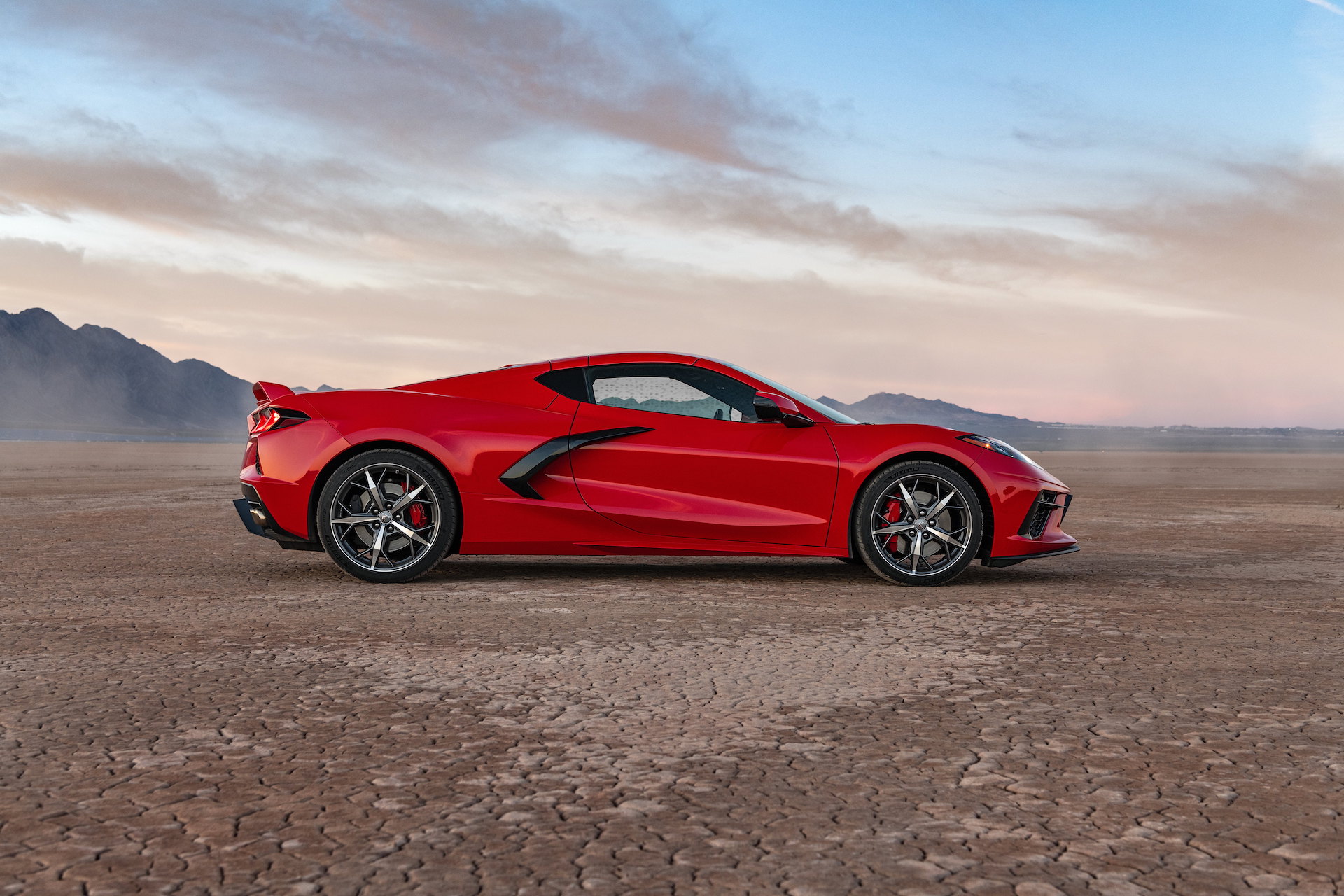
Once again, thanks for being a part of the CorvSport family. If you want to keep up to date with all the fresh Corvette news and maintain a pulse on the lifestyle and culture of this exciting, iconic brand, CorvSport has the fastest-growing Corvette community on our Facebook page, with over 172,000 followers (53,000 since January 2023!). Come join other hardcore enthusiasts and say hello. This is Douglas B. signing off–click here if you would like to see more of my features.
To say thanks, we have a Black Friday deal for 50% off for life! This deal expires after December 6th!


